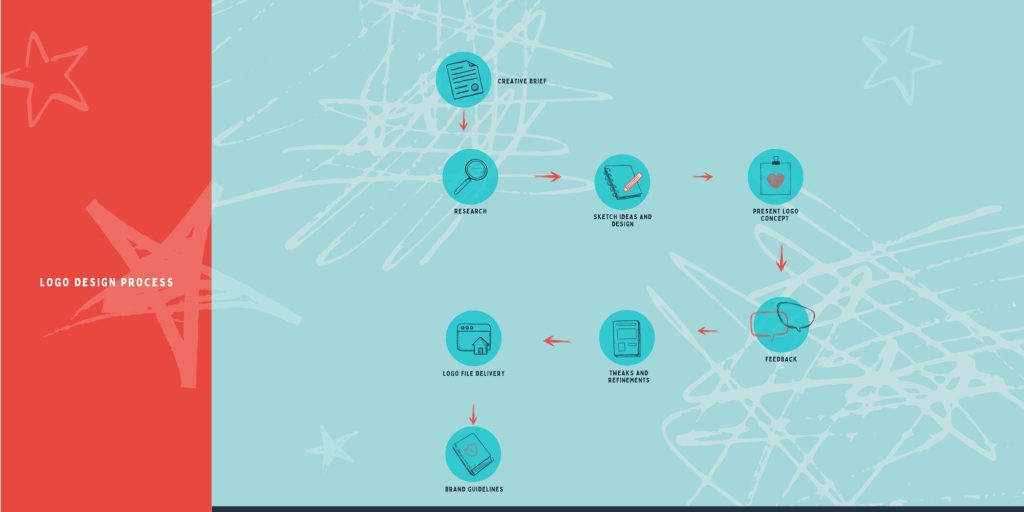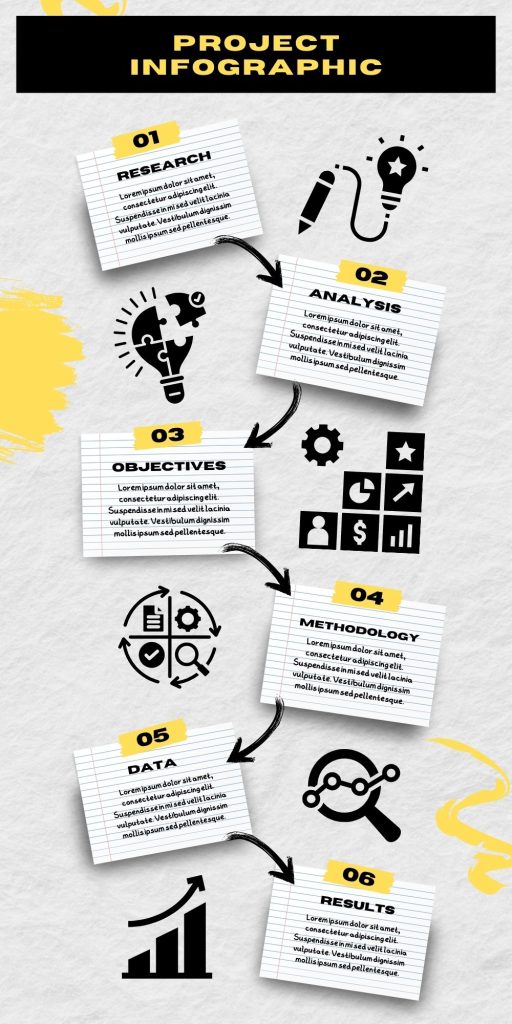Table of Contents
The Construction of Your Logo: Designing Your Company's Identity

Construction of the Logo
In the competitive world of business, a logo is more than just a symbol. It is the face of your company, the visual representation of your brand. A well designed one logo it has the power to convey your values, attract customers and create an unforgettable identity. But creating an iconic logo is both art and science.
The importance of logo design for business
A logo acts as the cornerstone of a company's visual identity. It is the first impression potential customers have of your brand and plays a key role in shaping their perception of your business. A strong logo can instantly convey professionalism, credibility and trustworthiness. It can differentiate your company from competitors and make your brand more recognizable in a crowded market.
Additionally, a well-designed logo can have a significant impact on customer engagement and brand loyalty. When customers have a positive emotional connection with your logo, they are more likely to develop a sense of loyalty towards your brand. This loyalty can lead to repeat business, referrals and increased customer retention rates.
Elements of effective logo design
To create an effective logo, it is essential to understand the key elements that contribute to its success. These elements include simplicity, memorability, flexibility and relevance.
Simplicity is vital in logo design because it allows for easy recognition and understanding. A simple logo is more likely to be memorable and can be reproduced in various sizes without losing its impact. A cluttered or overly complicated logo, on the other hand, can confuse customers and dilute your brand message.
Memorability is another critical element of logo design. A memorable logo is one that stands out from the competition and stays in the minds of customers. It should be unique and special, leaving a lasting impression. Think iconic logos like the Nike swoosh or the Apple logo – they're simple, but instantly recognisable.
Flexibility is important because a logo will be used across multiple platforms and media, from digital to print. It should adapt to different sizes, colors and backgrounds without losing its impact. One flexible logo can easily be scaled up or down, ensuring consistency and brand recognition in any context.
Relevance is the last element to consider. Your logo should align with your company's values, products and target audience. It should reflect the essence of your brand and evoke the desired emotions in your customers. For example, a children's toy company might choose a playful and colorful logo, while a law firm might choose a more professional and sophisticated design.
Understanding Color Psychology in Logo Design
Color plays a powerful role in logo design and can evoke specific feelings and associations. Different colors can convey different messages and create different perceptions of your brand.
Red, for example, is often associated with energy, passion and excitement. It can grab attention and create a sense of urgency. This is why many fast-food chains, such as McDonald's and KFC, incorporate red into their logos.
Blue, on the other hand, is often associated with trust, reliability and professionalism. It can create a sense of calm and safety. Many financial institutions, such as Chase and American Express, use blue in their logos to convey stability and reliability.
Yellow is often associated with optimism, happiness and creativity. It can convey a sense of warmth and friendliness. Companies like IKEA and Best Buy incorporate the color yellow in their logos to create a welcoming and approachable brand image.
These are just a few examples of how color psychology can affect the perception of your logo and brand. It is important to choose colors that align with your brand values and evoke the desired emotions in your target audience.
Typography and fonts in logo design
Typography and fonts play a key role in logo design as they can convey your brand's personality and tone. The right choice of fonts can enhance the message your logo conveys and create a harmonious visual composition.
When choosing fonts for your logo, it's important to consider readability, scalability, and uniqueness. Fonts should be legible even at small sizes, ensuring that your logo is easily recognizable across different media.
Scalability is also important, as your logo may need to be reproduced in various sizes without losing its impact. Finally, a unique font can help your logo stand out and create a distinct brand identity.
Serif fonts, such as Times New Roman, are often associated with tradition, elegance and authority. They can be a good choice for brands in industries such as finance, law or luxury goods.
Sans-serif fonts, such as Helvetica or Arial, are often associated with modernity, simplicity and cleanliness. They are widely used in technology, fashion and lifestyle brands.
Script fonts such as Brush Script or Pacifico can convey a sense of creativity, elegance and a personal touch. They are often used in industries such as beauty, food or arts and crafts.
It's important to choose fonts that complement your logo design and align with your brand personality. Experimenting with different combinations of fonts can help you find the perfect balance between readability and aesthetics.
Logo design trends to consider
Design trends logos they can provide inspiration and guidance when creating a logo for your company. While it's important to create a logo that stands the test of time, incorporating modern design trends can help keep your brand fresh and relevant.
A current trend is to use minimalist designs. Minimalism focuses on simplicity, clean lines and negative space. This style can create a modern and sophisticated appearance, while ensuring flexibility and scalability.
Another trend is the use of geometric shapes and patterns. Geometric designs can convey stability, order and precision. They can also create a sense of visual interest and uniqueness.
Handmade designs are also gaining popularity. These designs can evoke a sense of authenticity, craftsmanship and a personal touch. They are often used by brands that emphasize sustainability, organic products or artisanal services.
While it's important to be aware of current logo design trends, it's just as important to balance them with timeless design principles. A logo that follows the latest trends can quickly become outdated, so it is essential to create a design that will stand the test of time.
Logo Design Process – From concept to finished product
The creation of one logo it is a multi-step process that includes research, brainstorming, sketching, refining and finalizing the design. Each step is critical to developing a logo that truly represents your company and resonates with your target audience.
The first step in the design process logo is the research. This includes gathering information about your brand, target audience, competitors and industry trends. Understanding your unique selling points and brand positioning will help inform your design direction.
Once you have a clear understanding of your brand, it's time to brainstorm and design ideas. This is a creative phase where you explore different concepts, shapes, symbols and typography. Sketch allows you to quickly visualize ideas and iterate over different options.
After sketching, it's time to refine your ideas and select the most promising concepts. This involves converting your sketches into digital designs using graphic design software. You can experiment with different color palettes, fonts and compositions to perfect the design.
Once you have a polished digital design, it's important to collect feedback from stakeholders and potential customers. Feedback can help you identify any areas for improvement and ensure your logo resonates with your target audience. Iterating the design based on feedback is a critical step in the process.
Finally, after the design is complete, it's time to prepare the logo for various applications. This includes creating different file formats, variations colors and size options to ensure that the logo can be used effectively across different media and platforms.
Protecting Your Logo – Trademark and Copyright Issues
After investing time and effort to create it logo you, it is important to protect it legally. Trademark and copyright considerations play a critical role in protecting your logo and preventing others from using it without permission.
Trademark protection is vital for logos as it gives you exclusive rights to use, license and protect your logo in connection with your products or services. Registering your logo as a trademark can help create legal protection and prevent others from using a similar logo that might confuse customers or dilute your brand identity.
Copyright protection, on the other hand, automatically applies to original creative works, including logos. Copyright protects the visual expression of your logo by preventing others from copying, reproducing or modifying it without your permission.
It is important to consult legal professionals who specialize in intellectual property to ensure that your logo is adequately protected. They can guide you through the trademark registration process and help you assert your rights if necessary.
Conclusion – The lasting impact of a well-designed logo
In conclusion, a well-designed logo can have a lasting impact on your company's success. It acts as a visual representation of your brand, conveying your values and attracting customers. By understanding the art and science of logo design, you can create an iconic logo that truly represents your company.
Consider the key elements of effective logo design, such as simplicity, memorability, flexibility and relevance. Explore color psychology and typography options to enhance the message your logo conveys. Stay current on current logo design trends, but remember to balance them with timeless design principles.
Follow a structured logo design process, from research and brainstorming to refining and finalizing the design. Gather feedback and iterate on your design to ensure it resonates with your target audience. Finally, protect your logo legally through trademarks and copyrights.
By investing in a well-designed logo, you can create a memorable identity for your company and build a strong foundation for your brand's success. A logo may be just a symbol, but it has the power to shape perceptions, attract customers and leave a lasting impression. Embrace the art and science of logo design and watch your brand thrive.



Interest Form